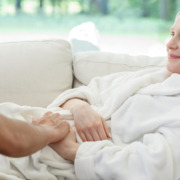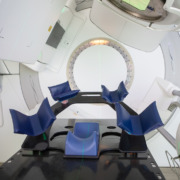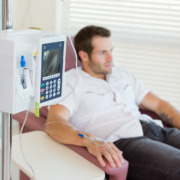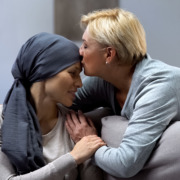Who Was The First Ever Person Treated With Chemotherapy?
The first treatment for cancer that comes to mind to people who are not necessarily familiar with oncology is chemotherapy, and private chemotherapy treatment is not only highly effective but also focuses on ensuring a high quality of life before, during and after the course is complete.
There are a lot of different types of chemotherapy, but they work by using particular treatment agents to inhibit the growth or damage the DNA of cancerous cells, which is taken in cycles to break down and kill a cancerous tumour.
It can be undertaken on its own or in combination with radiotherapy to enhance its effect, radiosurgery or conventional surgery to kill any existing cancer cells following the destruction or excision of the tumour.
There are countless chemotherapy treatments and the right one for you will depend in large part on the type of cancer you have, its current progression, your overall health and your personal wishes when it comes to how you want to be treated. We are there every step of the way.
It is the newest of the three most established treatment pathways for cancer, with surgery and radiotherapy respectively being technically older but having changed significantly in the century since they were first used.
Chemotherapy was the result of an accidental discovery of a beneficial side effect of a chemical agent designed to cause harm.
The Development Of Chlormethine
The beginning of chemotherapy begins with the ancestor of chlormethine, a specialist drug that is either injected or used topically to treat certain types of skin cancers such as lymphoma, polycythaemia vera and some types of lung cancer.
Chlormethine, sometimes known as Mustargen, was originally derived from a much more harmful compound designed not to treat cancer but to cause harm: mustard gas.
Initially discovered in the 1860s by Frederick Guthrie, it was manufactured by Franz Haber and used in the First World War as one of the first modern chemical weapons ever deployed.
Whilst the harm mustard gas caused was immeasurable, and it was first banned in 1925 for that reason, there was also a rather interesting side effect found that it could also kill cancer cells in the lymph nodes in studies on its physiological effects.
The phenomenon was first discovered in 1919 by Dr Edward Krumbhaar, but it was not until the 1940s that these findings were fully applied to the treatment of cancer.
Early studies in mice, later confirmed in rabbits with lymphoma, confirmed its potential therapeutic properties once the sulphur used to make mustard gas was replaced with the less volatile nitrogen to create nitrogen mustard, which would become chlormethine.
Patient JD
The first human patient to ever be treated with chemotherapy was a man known as JD, living in Connecticut having been born in Poland.
Born in 1894, he emigrated to the United States and worked in a factory that manufactured ball bearings until he became ill in 1940 with non-Hodgkin lymphoma, then described as lymphosarcoma.
It was particularly aggressive, causing swelling throughout the right side of his neck, requiring 16 consecutive days of external beam radiotherapy using X-rays in 1941, before undergoing surgery to remove some of the tumours.
By 1942, the case had seemingly become terminal; the tumours were unresponsive to treatment, and the placement of the tumours made it particularly difficult to treat.
Out of options, JD’s doctors allowed for the use of chlormethine, known as “substance X” to ensure secrecy. This was the first use of chemotherapy to treat cancer, and the results were rather astonishing.
An unresponsive cancer had drastically reduced after five days, and despite struggling to breathe before the treatment, he found it easy to move his head and eat comfortably without difficulty. It had not only saved his life but given him his life back.
Unfortunately, whilst it was the right treatment, it was ultimately too late, and JD passed away 96 days following his first dose of treatment due to a relapse in the cancer at the age of 48.
A Legacy Of Lifesaving Care
JD’s story mirrors that of the unnamed 52-year-old patient of Victor Despeignes who in 1896 was the first person with cancer to be treated using X-rays. Once again, the treatment was remarkably effective but arrived too late to help.
Their bravery and willingness to try a treatment that was experimental at the time have contributed to the saving of millions of lives by proving the effectiveness of both treatments.
It led to the development of other chemotherapy medications, and within the decade following the Second World War, chemotherapy became an established treatment practice. By 1965 and the development of combination chemotherapy, cancer care was transformed forever.
Get in touch
Our team will guide you throughout every stage of your private chemotherapy treatment and ensure you’re comfortable during each visit. Contact us for more information.











